If you’re looking to get the best set of abs possible, you gotta make sure to train the obliques! Training the obliques will not only round out your core and six-pack aesthetics as a whole but will also prevent injury, improve your posture, and help stabilize your spine during all other activities you do – both in and out of the gym. Get ready to take your obliques to the next level – all with just dumbbell oblique exercises!
Oblique Anatomy
The obliques are made up of two sets of muscles – the internal obliques and the external obliques. The external obliques are the visible portion of the obliques and run at a diagonal angle along the sides of the rectus abdominis (the six-pack muscles). As you can see below, they really round off your abs and add that shredded look just like in Rocky IV.

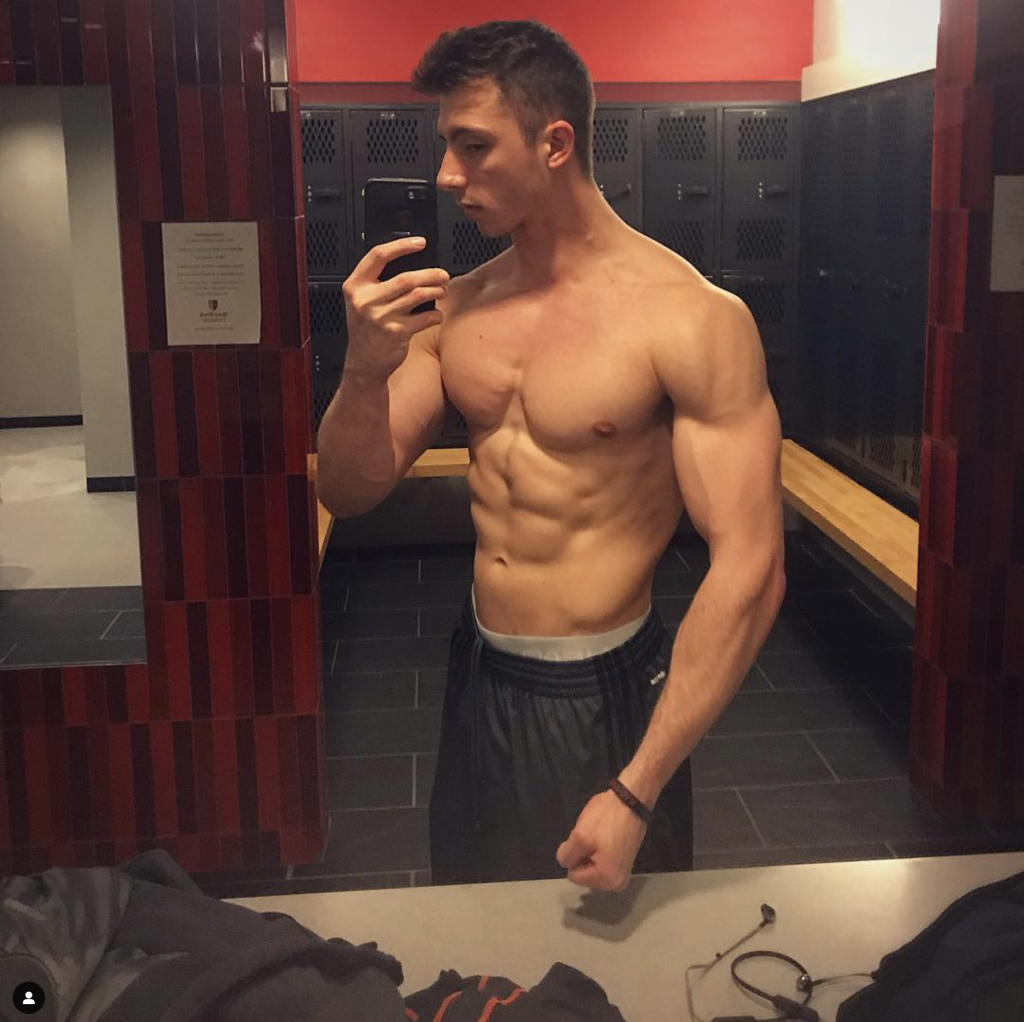
Just as important, although not visible, are the internal obliques. Their fibers run in the opposite direction to the external obliques, but they lie underneath the external obliques – that is why you can’t see them. But, just because you can’t see a muscle doesn’t mean you shouldn’t train it.
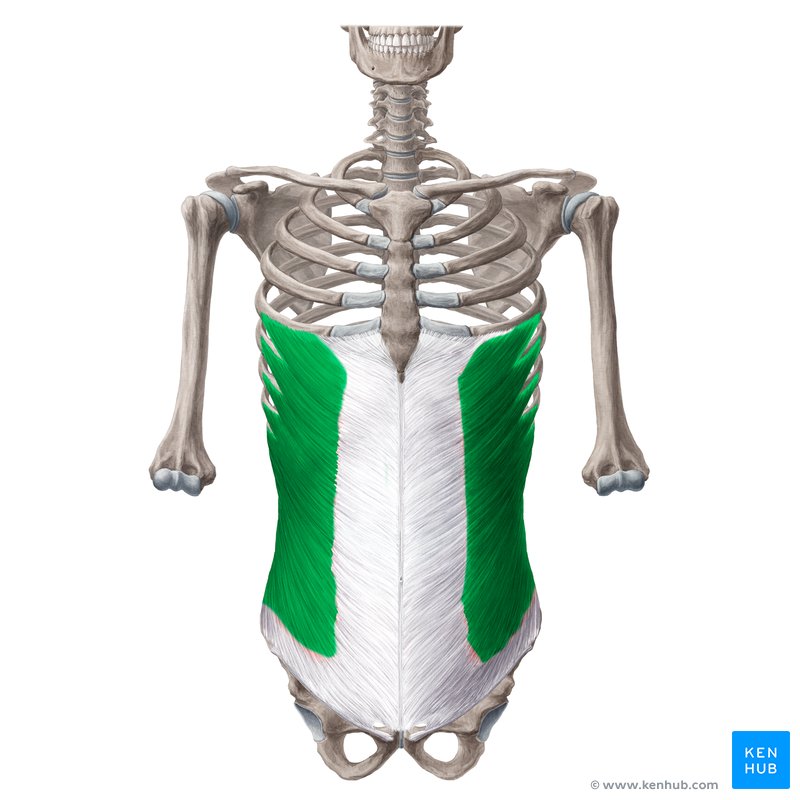
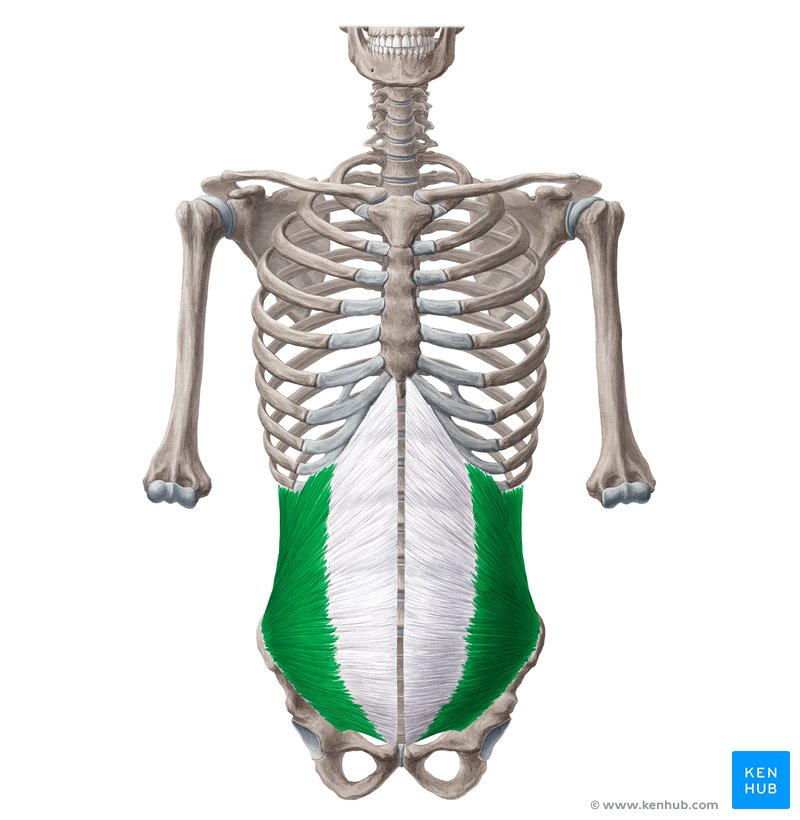
Both the external and internal obliques work in tandem with all your other core muscles to stabilize the spine during heavy compound movements – like bench, squat, deadlift, pull-ups, OHP, etc. In addition to stabilizing the spine, they work to laterally flex the spine as well as rotate the spine. So, in order to optimally grow and strengthen the obliques, we gotta focus on doing movements that target these functions.
Myths
Before we get into the best dumbbell oblique exercises, we gotta cover a couple of misconceptions and myths around oblique training, and core training, as a whole.
1. You can spot reduce belly fat by doing ab exercises
This is one of those fitness myths that just needs to go already. In order to lose fat, you must be in a calorie deficit. Anyone telling you otherwise either doesn’t know any better or is trying to sell you something (unfortunately, it’s usually the latter). This is done through one of two ways – eating less, moving more, or my personal recommendation – both!

As you reduce your body fat by staying in a calorie deficit, your abs will become more and more defined. There is no need to spam out endless crunches and sit-ups in hopes of getting your abs to show. Of course, it’s still important to train your abs, just like any other muscle in order to strengthen and grow them, but when it comes to getting them defined, that’s just a body fat issue. And that is solved by being in a calorie deficit.
A daily deficit of 500 calories will result in about a pound of weight loss per week. Double it to 1,000 calories and you’ll lose about two pounds a week. Don’t go any higher than that or you might risk losing muscle due to the extreme calorie restriction. Aim to lose anywhere between .5-1% of your body weight per week while training your abs along with the rest of your body.
To calculate this, multiply your body weight by 0.005 to get the low end of the recommended pounds to lose per week. Then, multiply your body weight by 0.01 to get the high end of the range. So, if you weigh 200 lbs, losing anywhere from 1-2 lbs a week is a good rate to lose. You’re not moving at a snail’s pace, but you’re also not starving yourself. This is the meta in order to get those Rocky abs you’ve always wanted.
2. Training your obliques will make your waist bigger
Another classic myth in the fitness space that just has to go. No… training your obliques will not make you add 10 inches to your waist and turn you into Mr. Incredible. While they will grow once you start training them, they don’t have a large growth potential. You will not add inches to your waist by training them.
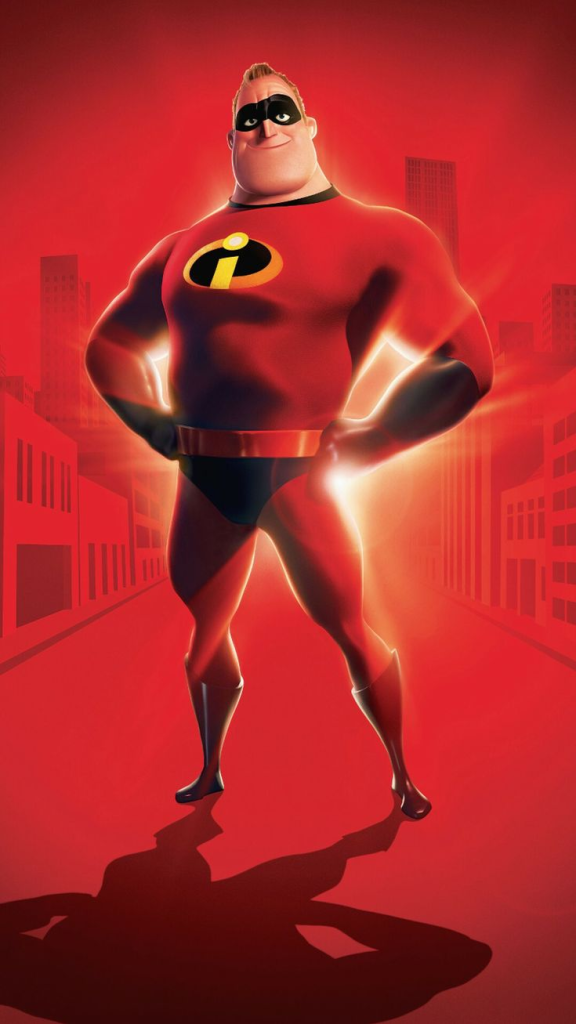
You will however, make them more defined which is ideal for aesthetics. The more well-developed your obliques are, along with the rest of your core, the more visible they will be at higher body-fat percentages. So you won’t have to diet down to crazy low body fat levels to see them – you’ll be able to see them clearly at ~12% body fat, even 15-20% body fat if you keep developing them.
The only situation where training your obliques would really make your waist bigger is if you’re someone with a naturally large waist. In that case, training your obliques would make your waist bigger, but training the obliques had a minimal role in doing so. You just got dealt bad genetics in that department. So either accept it or pick better parents next time.
And if you ever think having a big waist is gonna ruin your aesthetics, look at this Austrian bodybuilder from the 70s. He had a pretty wide waist, and he did pretty well in his career (and by good, I mean one of the greatest of all time).
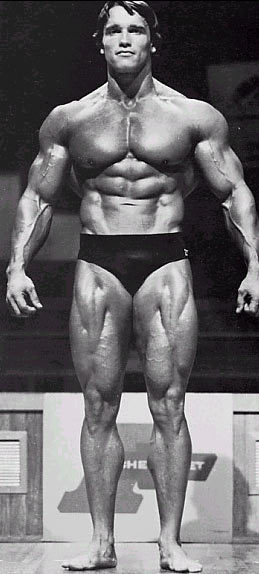
So, don’t worry about thickening the waist, and start training those obliques!
3. Thinking that the core needs to be trained with super-high reps in a circuit fashion
The last of these myths might be the biggest obstacle stopping people from getting the core they’ve always wanted. It is commonly believed that the abs need to be trained using super-high reps because they are always activated in daily life, so they would need high volumes in order to stimulate a growth response. That is simply not true.
The core is just like any other muscle in the body. There is no need to train it any differently in order to get it to grow.
Think about it like this – imagine if I told you that in order to grow your biceps, you would need to do a circuit of a bunch of different exercises for hundreds of reps each with a five-pound dumbbell.

I think you see what I’m getting at here…
Training like this would probably get you sore and a decent pump, but it’s not the best way to develop your obliques, or your core for that matter. Stick to normal rep ranges with a normal amount of volume per week and progress from there just like any other body part. Make sure you can feel your abs working when you’re training them and you’ll be well on your way to getting a shredded core. Don’t crank out set after set of hundreds of reps in order to develop your core. You’ll just be wasting a bunch of time for mediocre results.
Dumbbell Oblique Exercises
1. Standing Dumbbell Side Bend
While holding a dumbbell in one hand and keeping your abs engaged by contracting them as hard as you can, bend away from the hand holding the dumbbell to get a good contraction in your oblique. Then, bend towards the opposite hand in order to get a good stretch on your oblique. That would be one rep. Repeat until you complete all the reps for that oblique before switching sides and repeating the process again.
2. Russian Twists
Sit down with your legs at a 90-degree angle and keep your feet a couple of inches off of the floor. Keep your core tight and maintain a posterior pelvic tilt by squeezing your glutes. While maintaining the braced abs and a posterior pelvic tilt, hold the dumbbell out in front of you and rotate your core from side to side. Don’t just move your arms, really focus on rotating at the core as that is one of the main functions of the obliques. If that is too difficult for you, regress the movement by keeping your feet on the floor. Once you get strong enough, progress the movement and make it harder by keeping your feet in the air.
3. Kneeling Halos
Get into a kneeling position and hold the dumbbell straight up in the air in front of you. Start by moving your arms clockwise around your body until you reach the starting position. Then, move your arms counterclockwise around your body until you reach the starting position again. That would count as one rep. Continue alternating directions for each rep as you complete the set.
4. Kneeling Woodchoppers
Get into a lunge position by keeping one knee on the ground and your other leg at a 90-degree angle with the floor. While holding the dumbbell towards the side with your knee on the ground, rotate your core up and to the side (at a diagonal angle) and return back to the starting position. After you complete the set for one side, switch which knee is on the ground and which is making a 90-degree angle with the floor, and perform reps on the other side.
5. Kneeling Shoulder Press Rotations
Get into a kneeling position with both knees on the ground and hold the dumbbell with one hand with your palms facing away from you. With your other arm extended for balance, push the weight up and rotate it, so that your palm is facing you at the end of the rep. Bring it back down, but rotate your hand, so that your palm is facing away from you just like in the starting position. Repeat all the reps on one side before switching to the other. side Make sure that the rotation of your trunk comes from your obliques and not from your arms.
6. Dumbbell Thread The Needle
Get into a side plank position with your elbow on the ground, hips in the air, and with your feet stacked on top of each other. From there, grab the dumbbell and rotate your core until your arm is pointing toward the ceiling. Lower the weight back down and bring the dumbbell under you as far as you comfortably can before returning to the starting position. Complete all reps on one side before moving to the other.
7. Suitcase Carry
Two Hand Suitcase Carry
While holding dumbbells in both hands at your sides and keeping your core tight, begin walking while keeping your core tight. You don’t want to flounder like a fish while you’re doing these. Take strong, stable strides while maintaining a rigid core. The aim here is to prevent your spine from rotating while taking those steps.
One Hand Suitcase Carry
For an even greater challenge on the obliques, try the exercise while holding a dumbbell in only one hand. Rather than placing equal stress on both obliques when holding the dumbbells on both hands, this variation challenges the oblique that’s not holding the dumbbell to prevent your core from moving which will really challenge it and get them to pop.
Programming and Tips for Progression
1. Don’t train the obliques any differently than other body parts
Like I covered in the myths section, the obliques are just like any other muscle in your body. They don’t require some special high-rep, circuit workout in order to get them to grow. Just focus on getting a good stretch and a good squeeze while doing the dumbbell oblique exercises listed above and you’ll be golden. Increase the difficulty of the exercise as you get stronger over time and you’ll have a lifetime of progression available to you.
2. Frequency
If the obliques are a weakness in your physique, you can train them as often as every day. However, I’d refrain from doing that and would stick to a more moderate frequency of anywhere from 2-4 times a week. If you do wanna train them every day, don’t do as many sets, so you don’t overtrain your abs, which will make it harder to do all the other compound exercises in your program.
3. Sets/Reps
Since the obliques are a small muscle, they won’t require a crazy amount of volume to grow. Doing 2-3 sets of 10-15 reps a few times a week will be more than enough to develop your obliques. I’d recommend employing a double progression scheme where you stick with the weight until you reach the high end of the rep range for all sets in your workout before adding more weight. This will give you slow and steady progress for years to come.
Here’s what a sample double progression could look like. I’m using the standing dumbbell side bend as the exercise of choice.
- Week 1: 2 sets of 13, 13 reps with a 15 lb dumbbell
- Week 2: 2 sets of 14, 13 reps with a 15 lb dumbbell
- Week 3: 2 sets of 14, 14 reps with a 15 lb dumbbell
- Week 4: 2 sets of 15, 15 reps with a 15 lb dumbbell
- Week 5: 2 sets of 10, 10 reps with a 20 lb dumbbell
So as you can see, you want to stick with the weight until you perform the high end of the rep range for all sets for that exercise. Then, increase the weight. This works best for smaller, isolation exercises like these. Give it a shot and make those gains!
4. Progressions and Regressions
If these dumbbell oblique exercises are too difficult for you or you find that you are getting low back pain while doing them (a sign that the lower back is compensating for weak abdominals), try out these movements with just your body weight and progress to using the dumbbells once you get strong enough. If you find that the weight you are using is too easy, add more weight with the double progression model I mentioned above to continue making the exercise an appropriate challenge for you.
Closing Remarks
So, there you have it. How to get a nice set of obliques just like Rocky and Goku, all with just a dumbbell. Remember, no matter how developed your obliques get, you’ll never be able to see them if you don’t get your diet in check. Lose the fat, get stronger at the exercises listed above, and you’ll be well on your way to getting the obliques and abs of your dreams. If you’re looking to take your training to the next level and get personalized one-on-one coaching from Coach Jay, check out my 10 Week Physique. You’ll receive a personalized training program, nutrition guide, and more! Check it out here!
